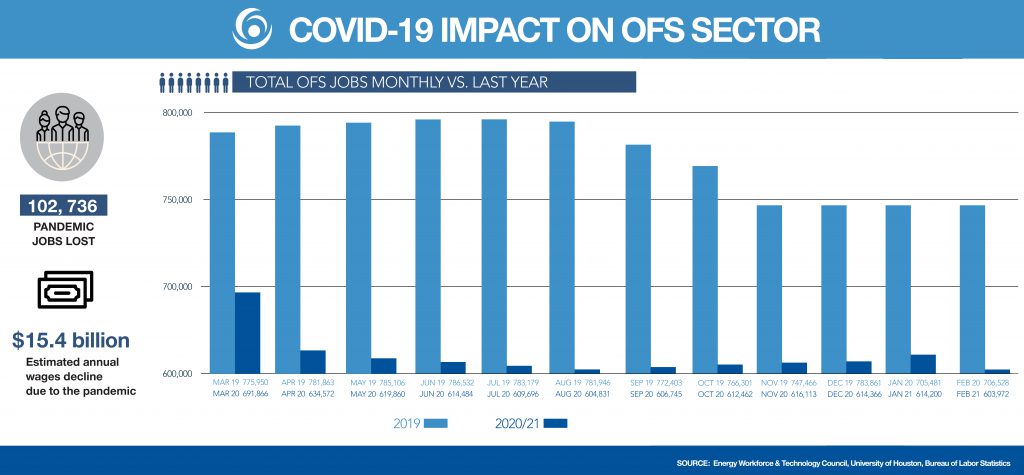America’s oilfield services and equipment sector employment fell by an estimated 10,048 jobs in February, according to preliminary data from the Bureau of Labor Statistics (BLS) and analysis by the Energy Workforce & Technology Council (Council).
Routine BLS revisions show the sector lost 1,747 jobs in December 2020, and 166 positions in January 2021. After gaining 11,282 jobs in September through November of last year, the sector has cut an estimated 12,321 positions in December, January and February. The monthly Oilfield Services and Equipment Employment Report, compiled and published by the Council, estimates more than 102,000 pandemic-related job losses.
Using BLS data, the Council, in consultation with researchers from the Hobby School of Public Affairs at the University of Houston, estimates OFS sector jobs in the U.S. dropped from 706,528 in February 2020 to 603,732 in February 2021, a decline of 14.5%. Losses were heaviest in April, when the sector shed 57,294 jobs — the largest one-month total since at least 2013. OFS sector employment is at its lowest point since at least 2013.
The jobs lost in 2020 represent annual wages of approximately $15.4 billion.
OFS sector employment has stagnated as companies continued reducing costs, improving balance sheets and cash flow, and did not significantly boost production. Analysts believe production could increase as more people are vaccinated and demand rises.
The Council is the national trade association for the oilfield services and equipment sector, representing more than 600,000 jobs in the technology-driven energy value chain. More than 600 member companies are involved in oilfield equipment manufacturing, drilling, well completions, well services, pressure pumping, renewable energy technology and servicing, geothermal development, and more. Losing the innovative men and women who comprise the OFS sector jeopardizes development of the innovative technologies that increase efficiency, improve environmental performance, and reduce greenhouse gas emissions.
OFS job losses since February 2020 are estimated to be heaviest in Texas and Louisiana, which are the nation’s leaders in oil and gas production. According to BLS data, the states hit hardest by OFS job losses over the past year are:
- Texas — 56,000
- Louisiana — 10,800
- Oklahoma — 8,600
- Colorado — 4,200
- New Mexico — 3,800
- California — 3,700
- Pennsylvania — 3,600
- North Dakota — 3,200
- Wyoming — 2,400
- Ohio — 1,700
- Alaska — 1,600
- West Virginia — 1,500
OFS employment is estimated by analyzing data published by the U.S. Bureau of Labor Statistics and covers the economic activities of OFS companies, which include oil and gas extraction, construction and manufacturing. Total employment is estimated using the Quarterly Census of Employment and Wages, published by BLS, and jobs data reported by BLS monthly.
Note: BLS data is preliminary for the two most recent months and is subject to revision. The Council updates monthly totals according to BLS corrections, and updates the statistical model quarterly.
For additional information or questions about the report, contact lead researcher and Council Director of Communications and Research Kevin Broom.





